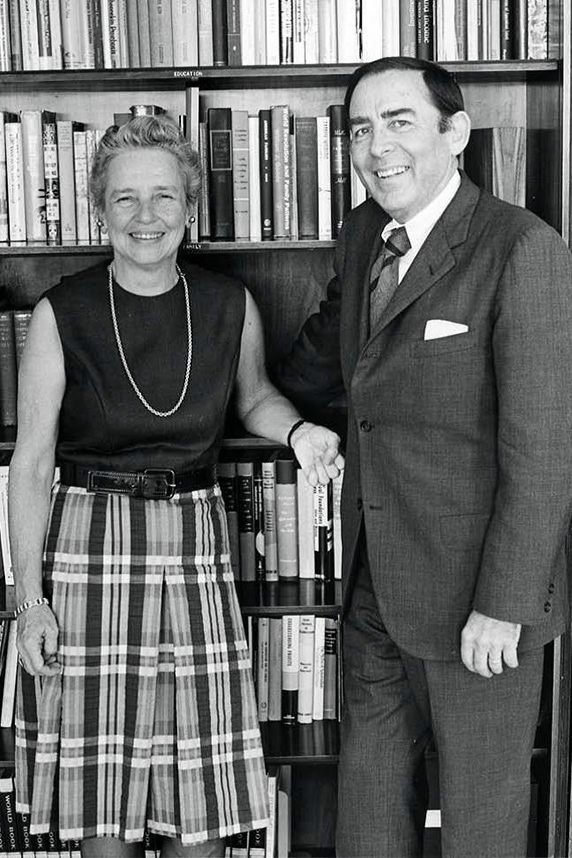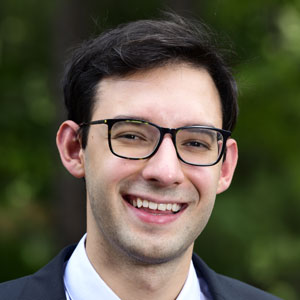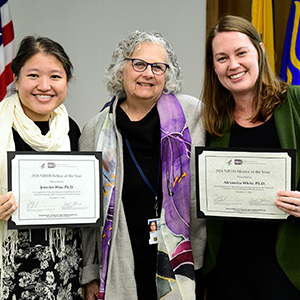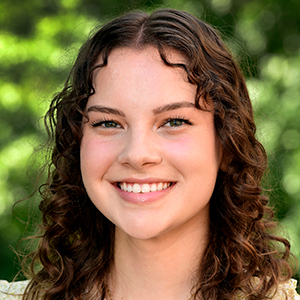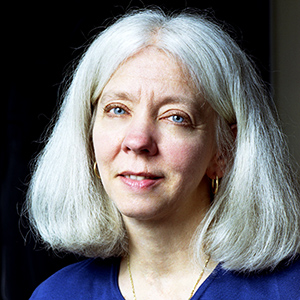Every young scientist stands on the shoulders of giants. Kaitlyn Lawrence, Ph.D., is no exception, as she acknowledged in a recent interview with Environmental Factor.
A postdoctoral fellow in the NIEHS Epidemiology Branch under the mentorship of Dale Sandler, Ph.D., Lawrence was one of four awardees at the 14th National Institutes of Health (NIH) Matilda White Riley Behavioral and Social Sciences Honors, held online May 5. The annual event includes an Early-Stage Investigator Paper Award, which Lawrence won for a 2020 paper she co-authored on neighborhood deprivation and epigenetic aging.
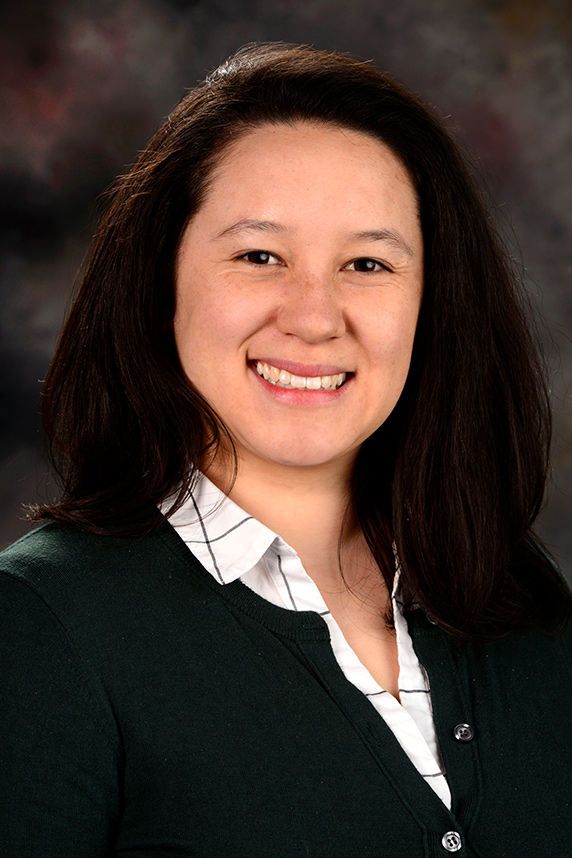 Lawrence’s study used new DNA methylation epigenetic metrics to establish an association between deprived neighborhoods and age-related disease, mortality, and reduced life expectancy. (Photo courtesy of Steve McCaw / NIEHS)
Lawrence’s study used new DNA methylation epigenetic metrics to establish an association between deprived neighborhoods and age-related disease, mortality, and reduced life expectancy. (Photo courtesy of Steve McCaw / NIEHS)The epigenome represents all of the chemical modifications on DNA or the proteins associated with DNA that affect how genes are turned on and off. Certain environmental exposures — including psychosocial stress — may affect the epigenome’s internal clock, which represents biological age and does not always reflect chronological age.
Lawrence used data from the NIEHS Sister Study, analyzing 2,630 women who had a sister with breast cancer but had not had breast cancer themselves. Those who lived in socioeconomically deprived neighborhoods showed higher epigenetic age acceleration, which may lead to disease.
Environmental Factor: How did it feel to win the award?
Kaitlyn Lawrence: I was honored to be selected as an award recipient from a large pool of extramural and intramural applicants. Dr. Riley made a huge impact in the field of social and behavioral health sciences. The award named after her recognizes the use of interdisciplinary and cutting-edge methods to address key public health issues. As an awardee, I feel that I am carrying on an important legacy of someone at the forefront of innovative and impactful science.
I attribute my winning this award to the outstanding training, mentorship, and other resources provided to me by NIEHS as a postdoctoral fellow. My ability to carry on Dr. Riley’s legacy is incredibly meaningful and affirming of the type of research I do.
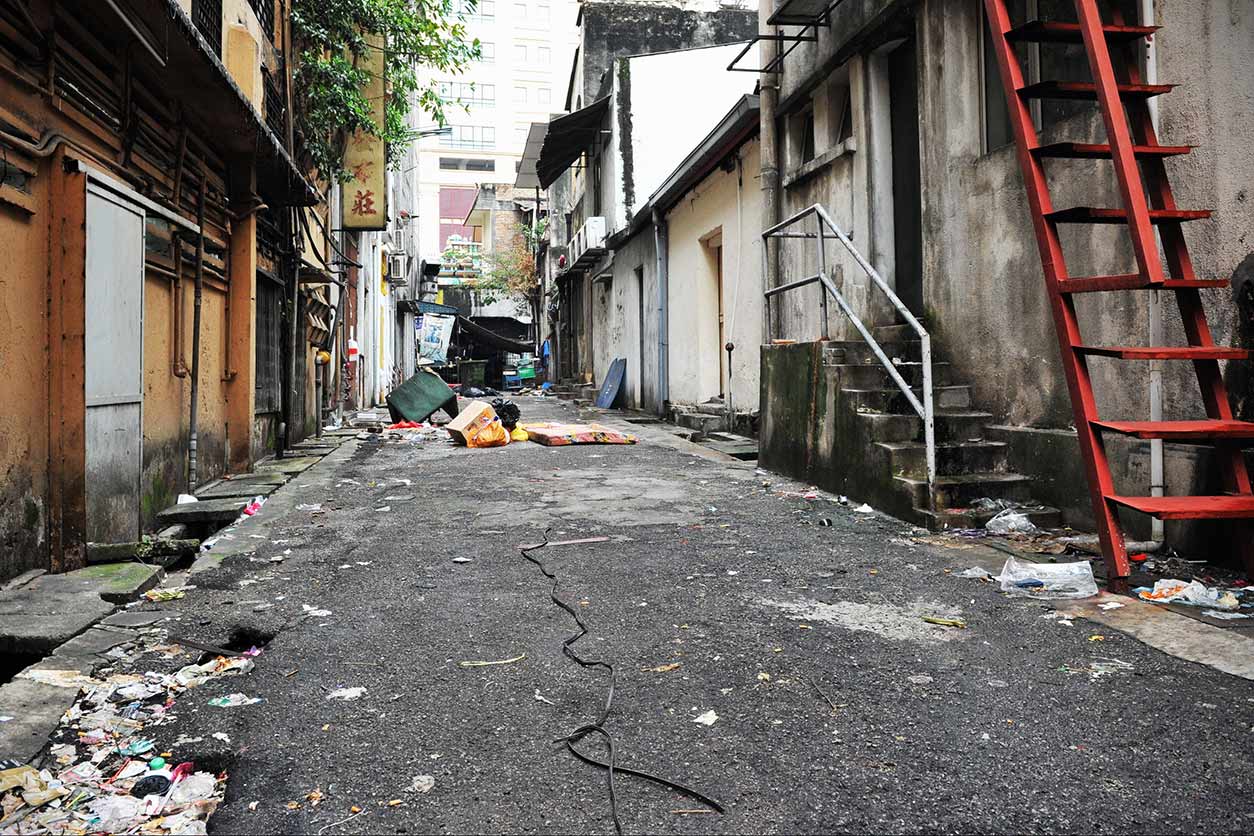 Lawrence incorporated neighborhood deprivation data into the GuLF STUDY to help bolster her future research. (Photo courtesy of 1000 Words / Shutterstock.com)
Lawrence incorporated neighborhood deprivation data into the GuLF STUDY to help bolster her future research. (Photo courtesy of 1000 Words / Shutterstock.com)EF: Tell us about the life path that led you to NIEHS. When did you join the institute?
KL: In 2014, I was hired as a summer intern for the NIH Summer Internship Program. I worked with Dr. Sandler on the Gulf Long-term Follow-up Study [GuLF STUDY], which was a major research response to the 2010 Deepwater Horizon oil spill. At that time, I was a doctoral student at Tulane University in New Orleans, and I was interested in studying the health of the Gulf state communities.
After completing my internship, Dr. Sandler and I decided to continue my summer research as my dissertation project, at which point I moved to NIEHS to accept a predoctoral fellowship in 2016. I stayed on as a postdoctoral fellow starting in 2018 to further explore the range of environmental factors that could affect GuLF STUDY participants’ health.
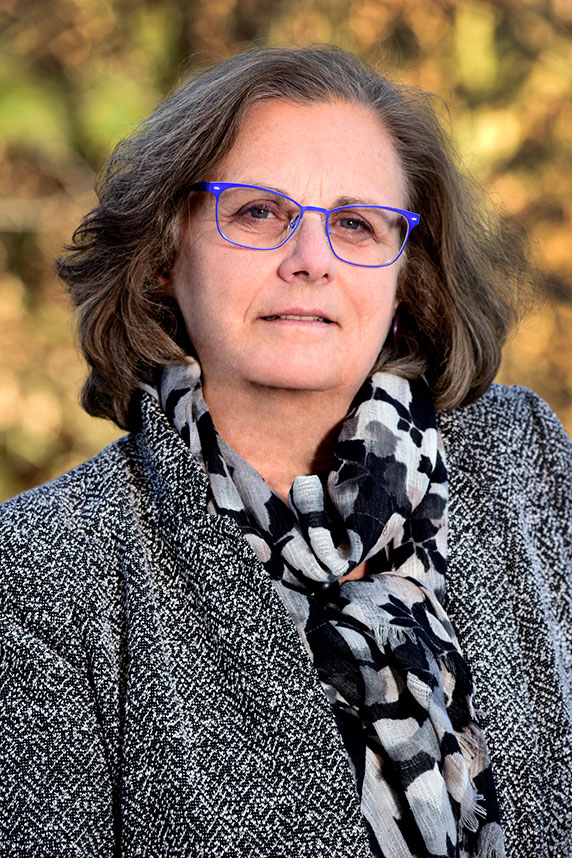 Sandler said she enjoys mentoring Lawrence. “We meet every week, despite the pandemic,” she noted. “We’re able to talk about her work, her career, and where her research needs to go.” (Photo courtesy of Steve McCaw / NIEHS)
Sandler said she enjoys mentoring Lawrence. “We meet every week, despite the pandemic,” she noted. “We’re able to talk about her work, her career, and where her research needs to go.” (Photo courtesy of Steve McCaw / NIEHS)EF: How have your scientific interests evolved during your fellowship?
KL: As a doctoral student, I initially sought to better understand the relationship between chemical exposures related to the Deepwater disaster and respiratory health among GuLF STUDY participants. As our research has evolved, it has become clear that contextual environmental factors, including neighborhood traits, play an important role in our study participants’ health.
My research has increasingly explored the role neighborhood social factors may play on health outcomes, including potential interactions of such factors with chemical exposures. In addition, I have developed an interest in epigenetic markers of aging, which could shed light on the range of environmental agents to which our participants are exposed.
EF: What are your goals for the future?
KL: In the short term, I plan to extend my award-winning research to explore other neighborhood factors on epigenetic markers of aging as well as replicate my study across multiple large cohorts.
In the long term, I would like to continue to incorporate data from fields such as metabolomics, proteomics, and transcriptomics. Those fields involving studying metabolites, proteins, and RNA, respectively, on a large scale. Merging such data will help me better understand the interplay of chemicals, social factors, and population-level health.
Citation: Lawrence KG, Kresovich JK, O'Brien KM, Hoang TT, Xu Z, Taylor JA, Sandler DP. 2020. Association of neighborhood deprivation with epigenetic aging using 4 clock metrics. JAMA Netw Open 3(11):e2024329.
(Ernie Hood is a contract writer for the NIEHS Office of Communications and Public Liaison.)





